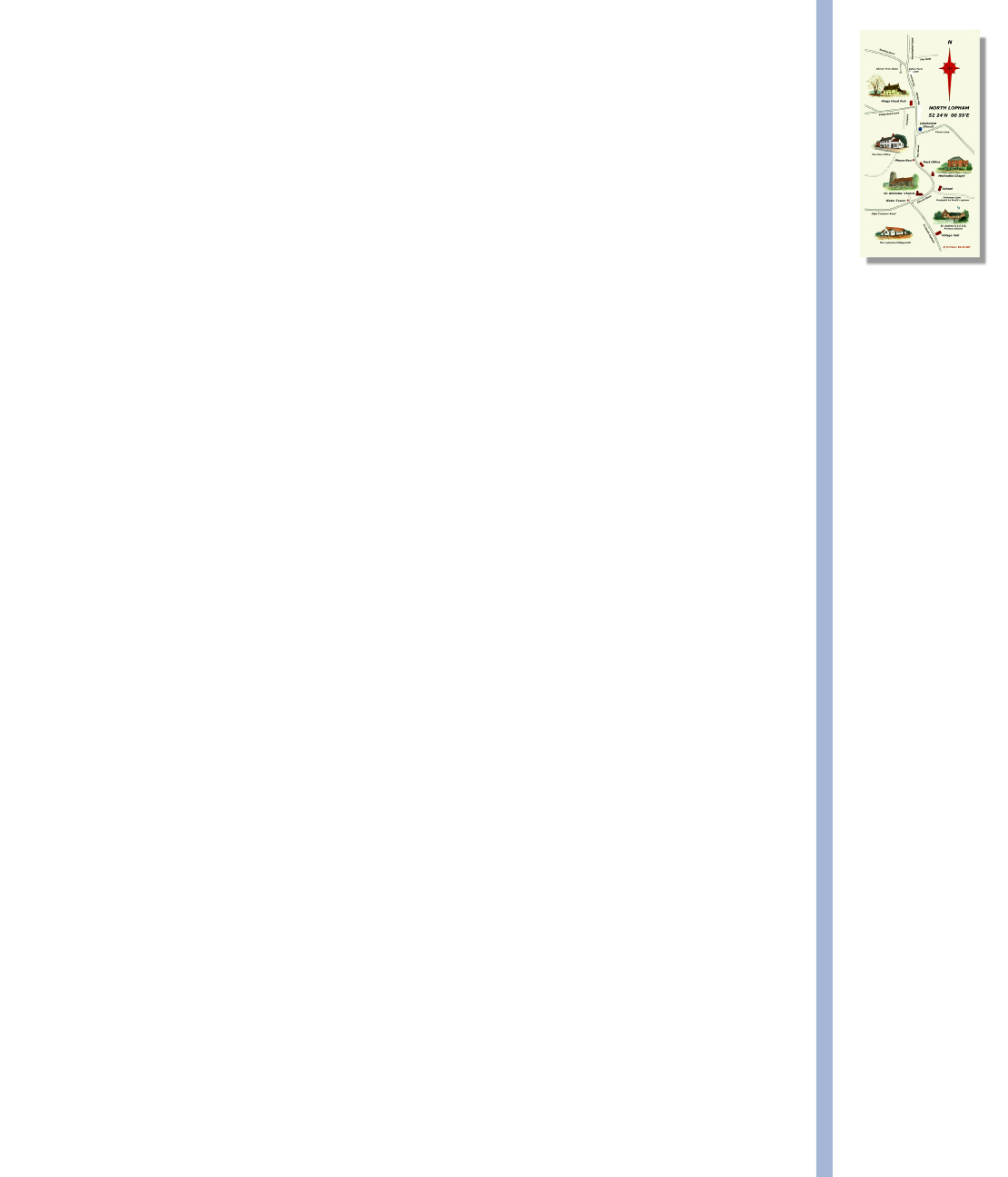


North Lopham Annual Open Meeting – May 10th 2006
Notes of some of the main points arising from the meeting, pending publication of full minutes at a later date.
All Parish Councillors, the Clerk and 13 members of the public were in attendance
Mains Drainage:
Brian Frith (Chair of the Parish Council) read an e-
‘I can confirm that that the North Lopham sewerage project has been included in the proposed programme for completion by 31 March 2010. Detailed design will begin this financial year with a start on site expected by April 2009, subject to planning and environmental considerations’.
In a follow-
‘We normally allow a two-
Anglian Water's policy regarding connection to the sewer is that if a property owner
agrees to connect to the new sewer at the time of construction, we will provide a
pipe to the boundary of the property and waive construction costs and also the infrastructure
connection charge (currently £260 + VAT). The only cost to the property owner will
be the cost of laying pipes in private garden to connect to the pipe we provide and
filling of the existing septic tank or cesspool -
If connection to the sewer is not made at the time of construction, the future costs
would be that as above plus the infrastructure charge and the cost of connecting
to the public sewer in the road, including highway notices and reinstatement costs
-
If a householder decides not to connect and his or her existing non-
I hope that is sufficient information in the meantime -
Gary Parsons, Asset Development Manager, Anglian Water. May 2006
The Pond (Letchmere):
Brian Frith detailed the investigations and enquiries which had been made to date, and said that the considered conclusions were as follows:
- Having been cleared, the outlet pipe (in corner of the pond adjacent to Tanns Lane) must be kept clear so that the water level does not rise.
- The inlet pipes (on ‘The Street’ side of the pond) should be extended several metres and new sandbag header walls constructed.
- The trees on the northern edge of the pond should be cut down / cut back.
- Moving the silt from the pond ‘off-
site’ is not a viable option because of the large costs (in excess of £1000) needed for licensing and testing, under current Environment Agency regulations. - The silt should be excavated from the pond and deposited on the sides, behind the new header walls and on the northern edge, to allow it to dry (probably a period of several weeks) before it could be used to landscape the banks of the pond. The pond will end up smaller than it is at the moment, but deeper, so that water temperature will be more even. Contractors have asked us to make clear that there will necessarily be a period when the sides of the pond look very untidy. It will take time for them to dry out and for the plants which we will be introducing to become established. This will be a necessary part of the improvement programme.
- Funding is being sought (and in some cases already obtained) from various sources
-
including a substantial grant from Norfolk County Council, and a contribution from the Parish Council reserves - but at the moment there will be an anticipated shortfall of a few hundred pounds. Brian Frith appealed for donations (large or small) from residents. If necessary a fundraising event would have to be organised. Any ideas? - All present at the meeting agreed that there were too many ducks at the pond. Advice from many quarters suggests that if numbers do not fall, efforts to improve the quality of the water, to increase the variety of wildlife in the pond and the attempts to establish plants will be adversely affected. For many months members of the public have been asked to avoid feeding the ducks, in an attempt to reduce numbers by natural means. A large majority of those present at the meeting thought that other means of reducing the numbers should be explored but appreciated that as a last resort a partial cull might be necessary if these measures did not work.
- A ‘Pond Renovation Project Team’ (7 members at present) was established to oversee the work and give practical assistance with some of the tasks envisaged for the scheme. More volunteers would be most welcome.
Other issues:
- Several residents expressed concern at the large number of heavy vehicles using the
village as a ‘through route’ and asked the Council to raise again the issue of a
weight limit for ‘non-
access’ vehicles. - Further to this there was renewed concern about the speed of vehicles (especially towards the northern end of the village), and the lack of footpath in that area.
- Public footpaths / rights of way were discussed at length: thanks to the cooperation of several landowners many improvements had been made, but it was thought regrettable that some of the paths ‘led to nowhere’ because the paths were not marked further from the village.
The Parish Council agreed to take up these matters with the appropriate authorities.